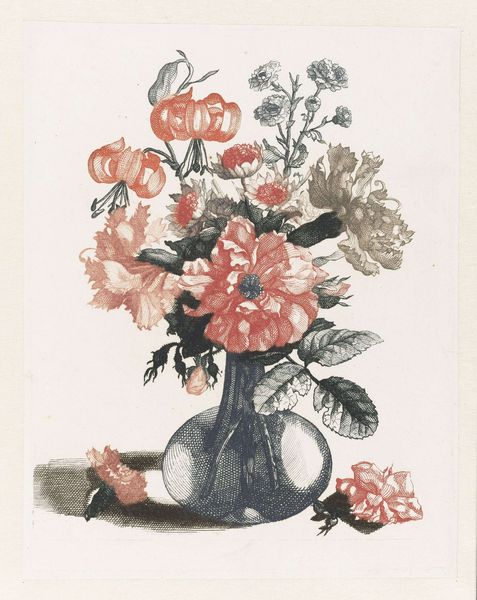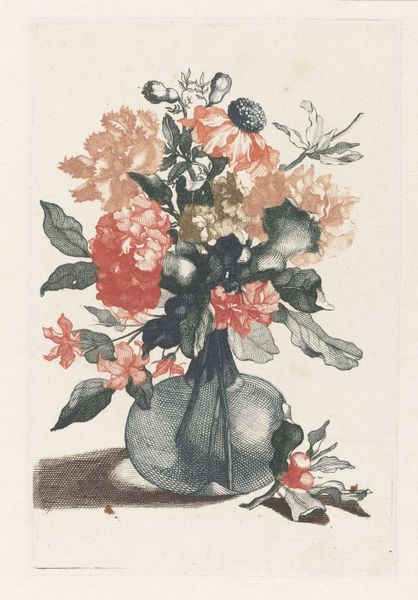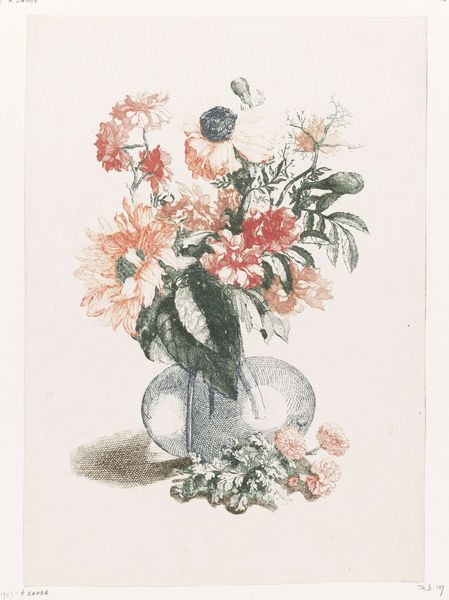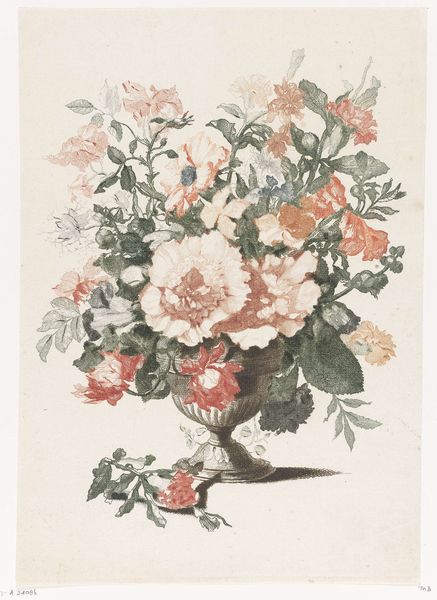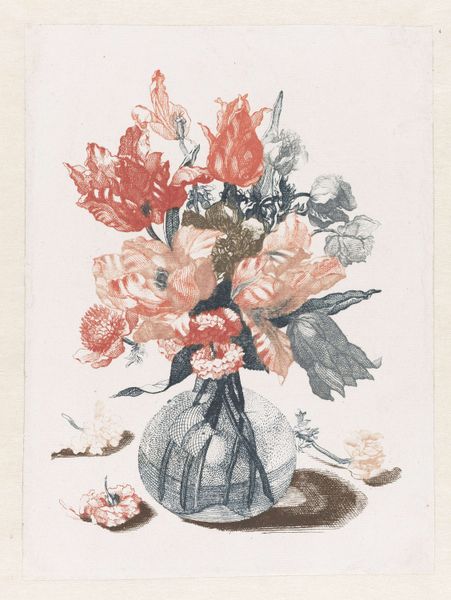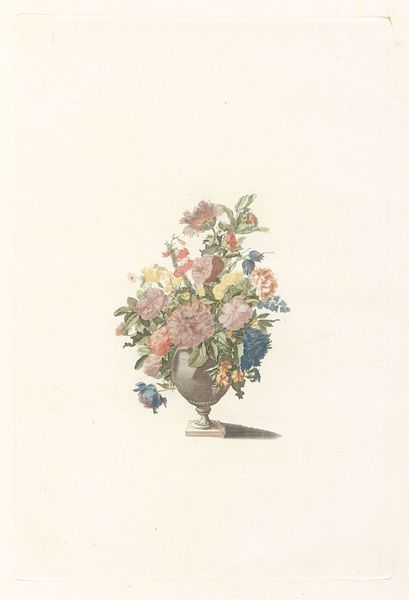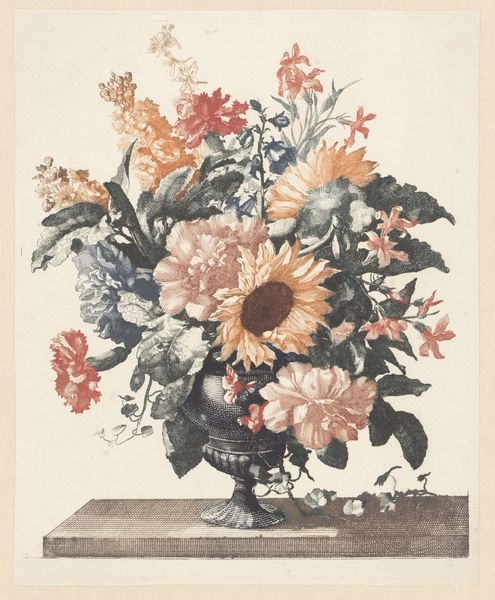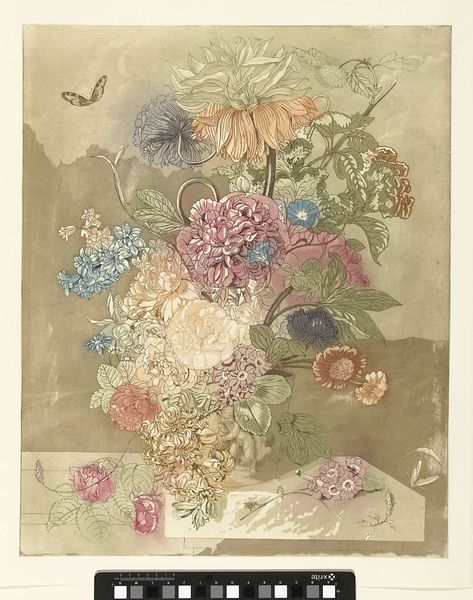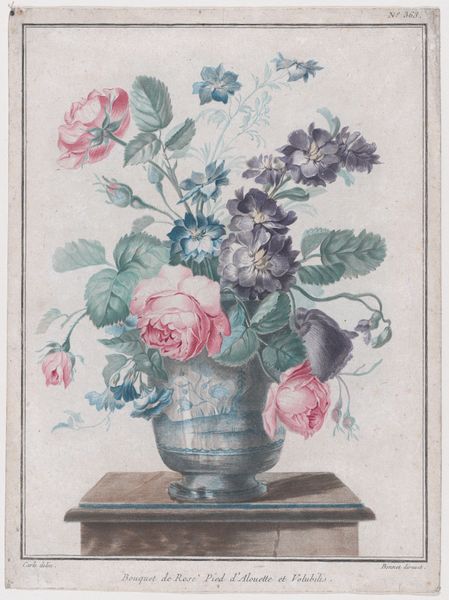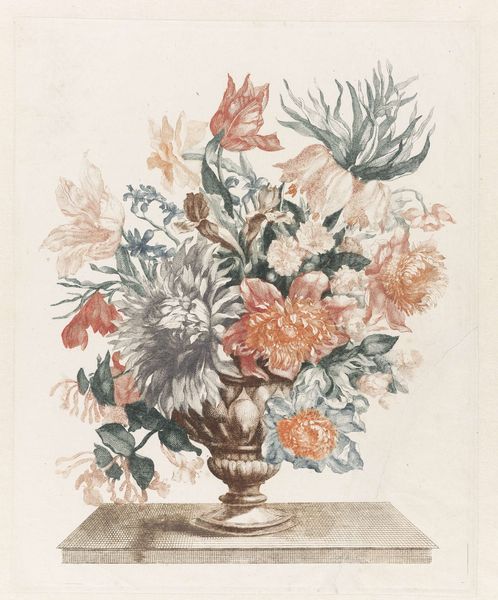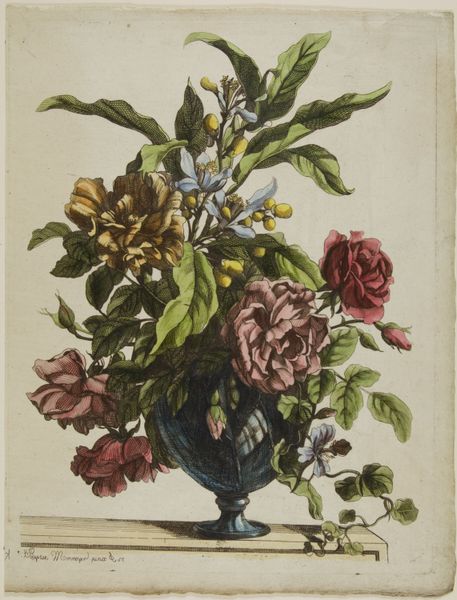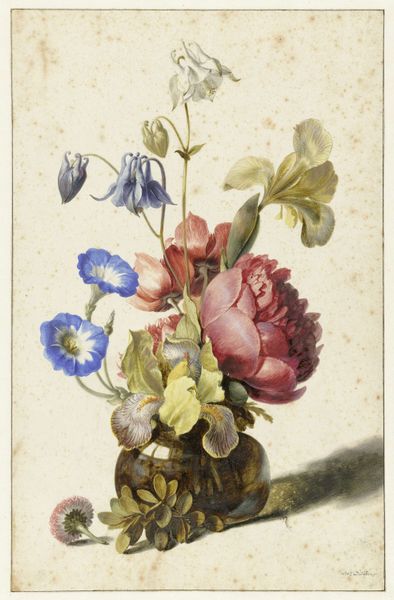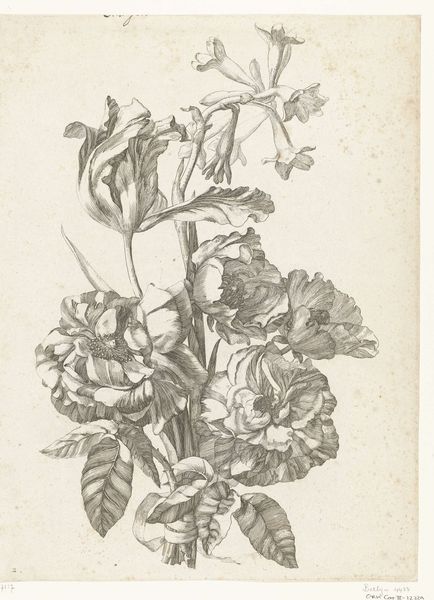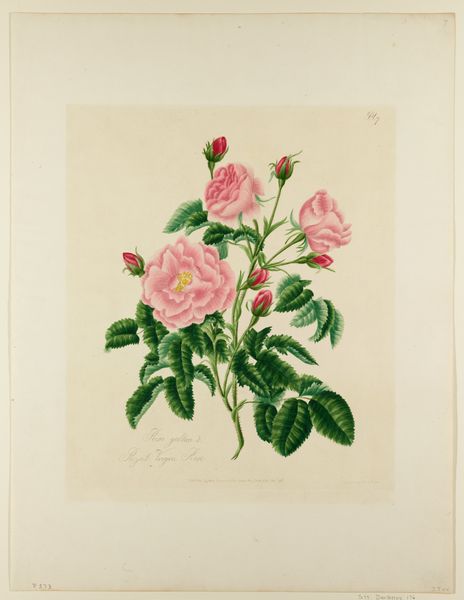
drawing, print, paper, ink, engraving
#
drawing
# print
#
pencil sketch
#
botanical illustration
#
paper
#
ink
#
botanical drawing
#
watercolour illustration
#
engraving
#
botanical art
Dimensions: height 227 mm, width 165 mm
Copyright: Rijks Museum: Open Domain
This is one of five prints of flowers in glass vases by an anonymous artist. The botanical study is rendered in fine detail using an etching technique. Prints such as these speak to the rise of scientific observation in the Netherlands, and particularly in Amsterdam. As a key trading hub of the Dutch Golden Age, Amsterdam had a large merchant class with a keen interest in natural wonders from around the world. Collectors formed cabinets of curiosity that included pressed flowers, and artists made botanical illustration a specialization. Institutions such as the Hortus Botanicus in Amsterdam played a crucial role in these developments. It served as a center for cultivation, research, and the exchange of knowledge about plants. By studying the visual culture of a specific time, we gain insight into the knowledge, values, and power structures of the time. A variety of sources, including trade records, scientific publications, and social histories, can help to illuminate the context in which art is produced.
Comments
rijksmuseum about 2 years ago
⋮
Johannes Teyler from Nijmegen was educated as a philosopher and mathematician, but also worked later as a military engineer. He invented a method for printing impressions in colour, for which he received a patent in 1688. The colours had to be applied to the copper plate by hand for each individual impression. Because this was very labour intensive, his colour printing process found little following.
Join the conversation
Join millions of artists and users on Artera today and experience the ultimate creative platform.
